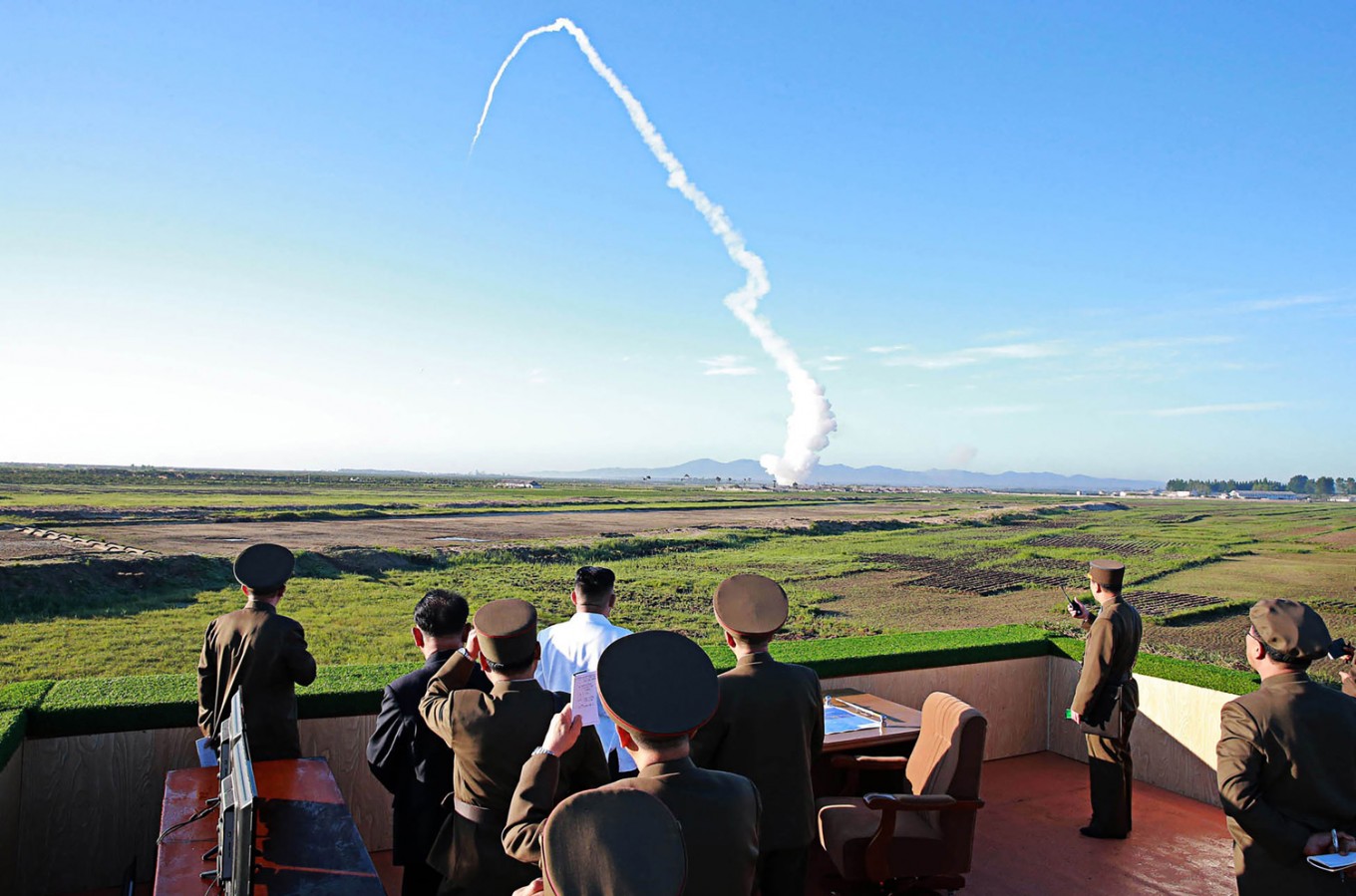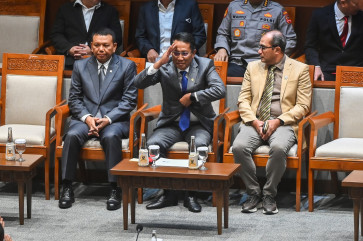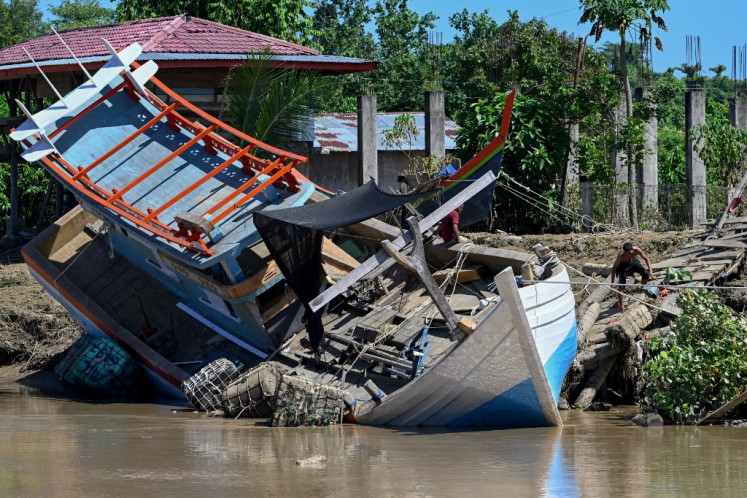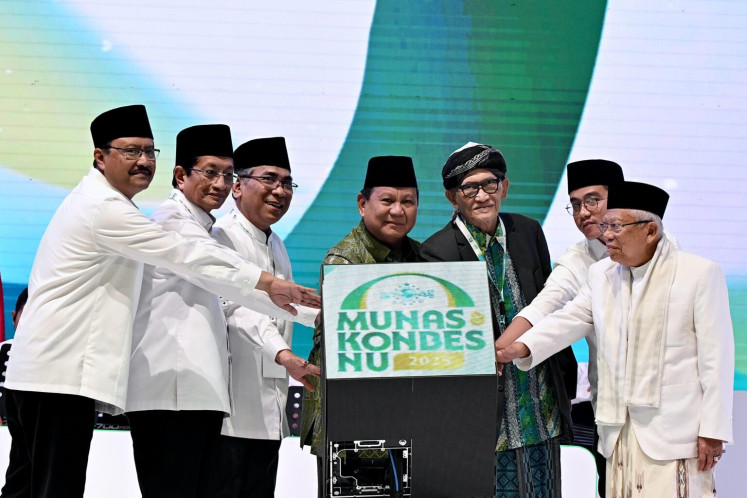Popular Reads
Top Results
Can't find what you're looking for?
View all search resultsPopular Reads
Top Results
Can't find what you're looking for?
View all search resultsFrom trinity to today: Turning the page on nuclear testing
A return to nuclear testing would almost certainly spark a dangerous arms race, one that undermines the purposes for which the UN was founded.
Change text size
Gift Premium Articles
to Anyone
 This undated picture released from North Korea's official Korean Central News Agency (KCNA) on May 28, 2017, shows North Korean leader Kim Jong-un (center, in white shirt) watching the test of a new anti-aircraft guided weapon system organized by the Academy of National Defense Science at an undisclosed location.
(STR / KCNA VIA KNS / AFP/File)
This undated picture released from North Korea's official Korean Central News Agency (KCNA) on May 28, 2017, shows North Korean leader Kim Jong-un (center, in white shirt) watching the test of a new anti-aircraft guided weapon system organized by the Academy of National Defense Science at an undisclosed location.
(STR / KCNA VIA KNS / AFP/File)
E
ighty years after both the founding of the United Nations and the first use of nuclear weapons, the world must summon the courage and conviction to finally turn the page.
In 1945, two historic developments reshaped the course of global diplomacy. The first was the establishment of the United Nations in October that year, following the signing of its Charter in June. This act of collective hope laid the foundation for international cooperation and a more peaceful and secure world.
The second was the first-ever nuclear test explosion, known as Trinity, conducted in New Mexico on July 16, 1945. It was soon followed by the bombings of Hiroshima and Nagasaki, which exposed the full, harrowing consequences of nuclear warfare.
Even as the world began to embrace a new international order, the threat of nuclear annihilation remained ever-present. From the outset, addressing this threat became a core responsibility of the UN and the broader international community. This concern was clearly reflected in the first action of the UN General Assembly, Resolution 1 (I), adopted on Jan. 24, 1946, which called for the elimination of nuclear and other weapons of mass destruction from national arsenals.
In the ensuing decades, nuclear weapons testing escalated at an alarming rate.
Between 1945 and 1996, more than 2,000 nuclear tests were conducted across the globe, averaging at least one test every nine days. Many of these had explosive yields far exceeding that of the bomb dropped on Hiroshima. These weapons were detonated on land, underground, in the air and underwater. Radioactive fallout, environmental harm and impacts on human health persist across generations.
This could not be allowed to continue. The opening for signature of the Comprehensive Nuclear-Test-Ban Treaty (CTBT) in 1996 was thus an important step in the right direction. This landmark treaty significantly enhanced global security, creating a global norm against nuclear testing.
Since then, fewer than a dozen nuclear tests have taken place, and in this century, only by one country: the Democratic People’s Republic of Korea (DPRK). Meanwhile, the treaty’s International Monitoring System (IMS), a network of over 300 facilities worldwide, ensures that no test can occur in secrecy and every region plays a critical role in this global vigilance.
The CTBT is a leading example of what diplomacy and science can achieve together. It is transparent, fair and highly effective. Its near-universal support speaks volumes. A total of 187 states have signed the treaty, and 178 have ratified it. Momentum continues to build, with nine states ratifying and one signing in the past three years. Several more are preparing to do so.
Remarkably, all of this has been achieved even though the treaty has not yet formally entered into force.
In 2009, the UN General Assembly declared Aug. 29 the International Day Against Nuclear Tests, commemorating the closing of the Semipalatinsk nuclear test site in present-day Kazakhstan on the same date in 1991. That site alone saw 456 nuclear test explosions over four decades.
This day is a solemn reminder that nuclear testing must become a relic of the past. And on this day, we must summon the courage and conviction to bring the CTBT into force.
The path ahead will not be easy. The current global climate is fraught with tension and uncertainty. But complacency is not an option. A return to nuclear testing would almost certainly spark a dangerous arms race, one that undermines the purposes for which the UN was founded. One that would threaten every community, every nation, every ecosystem and indeed the very planet we call home.
Looking ahead, two milestones approach. If no nuclear test is conducted by Jan. 14, 2026, the world will set a record for the longest period without a nuclear test since 1945. And on Sept. 24, 2026, we will mark the 30th anniversary of the CTBT’s opening for signature.
The progress we have made over the past eight decades proves that change is possible when the international community unites around principled, transparent and honest policies.
Let us meet this moment with realism, but also with hope. A safer world for everyone, everywhere is within reach, if we choose it together.
***
Philémon Yang is president of the United Nations General Assembly at its seventy-ninth session. Robert Floyd is the executive secretary of the Comprehensive Nuclear-Test-Ban Treaty Organization (CTBTO). The views expressed are personal.










